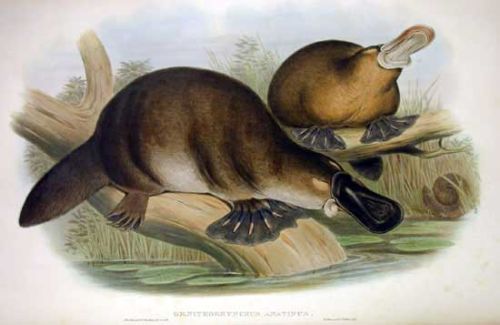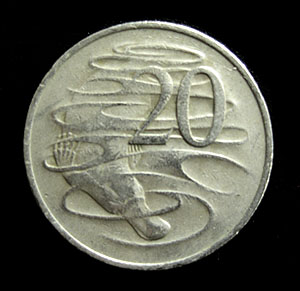Duck Billed Platypus are shy creatures, so seeing one in the flesh when in the Australian outback makes it all the more remarkable and special!
When I lived in northern NSW I’d go down to the creek in the early morning or late evening with the children and we’d stand on the wooden bridge scanning the water’s surface for a glimpse of the duck billed platypus we knew lived there. But the sightings could only ever be described as ‘fleeting’. As we’d turn our head towards movements caught out the corner of our eye we’d only see bubbles, circled by ripples, eluding our gaze as they ducked back down to the creek floor to forage for food.

Platypus by John Gould 1863
It was not until I visited Eungella, 90km west of Mackay in Queensland that I got my first ‘real’ look at one in the wild.
There are viewing platforms set up along Broken Creek, where the platypus have become used enough to their admirer’s glances that whilst still shy, they can be seen more readily.
Only two monotremes exist in the world – The platypus and the echidna. Monotremes are egg laying mammals.
Another unique feature of the platypus is the venomous spur on the male’s hind foot, which when human inflicted causes great pain.

The Platypus is featured on the Australian 20 cent coin
Seeing wild animals in their native habitat is simply magic ~
Have you managed to spot the platypus on our Map Journal? 😉


Pingback: How many Australian Animals can you find on our Map Journal? | Journey Jottings
Pingback: 101 Ways of Using your Map Journal | Journey Jottings
Oh, Linda, I am jealous 😉 Heather and I hung around Eungella for quite some time waiting for the platypus with no luck!
Owww 🙁
I’m sorry to hear that – As there’s such a thrill of seeing animals in their native environment –
I’ve heard people talk of seeing them at Cradle Mt in Tasmania – if you have yet to go there? 🙂
After years of hopeful staring into every creek and waterway where platypus were said to live, without any luck, I was lucky enough to see several on a trip to Tasmania earlier this year.
The town of Latrobe in northern Tasmania calls itself the Platypus capital of the world, and local Landcare volunteers conduct evening tours (around sunset) to nearby Warrawee Forest Reserve where they come out to feed most evenings.
Without the guide, we would have had no idea where to go or what to look for, but we now understand there’s no use trying to find them during the day, because they only come out to feed early in the morning and around sunset.
Here’s more information about the tours (which are very casual, personal and inexpensive):
http://www.axemanscomplex.com.au/platypus.html
Thanks so much for your comment of really helpful pointers and information as to how to best get a glimpse of a platypus!
I have yet to make it to Tasmania but will definitely put Latrobe on my itinerary as seeing platypus in the wild is such a privilege and a thrill, however fleeting 🙂